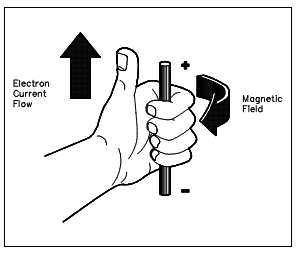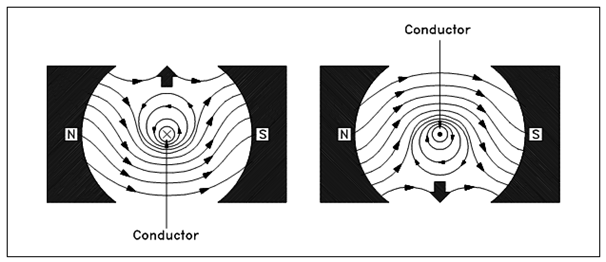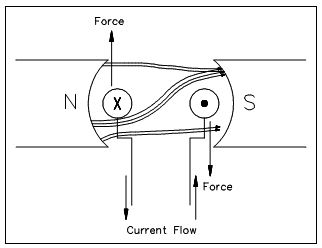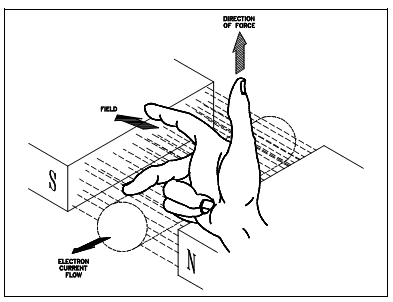Theory of Operation
Each current-carrying conductor has a magnetic field around it. The direction of this magnetic field might be found through using the left-hand rule for current-carrying conductors.Whenever the thumb points in the direction of current flow, the fingers will be point in the direction of the magnetic field generated, as display in Figure.

The combined fields will be same to that display in Figure if a current-carrying conductor is placed in a magnetic field. The direction of current flow by the conductor is denoted along with an “x” or a “•". The “x” denotes the current flow is away from the reader, or into the page. The “•” denotes the current flow is towards the reader, or out of the page.

Above the conductor on the left, the field caused through the conductor is in the opposite direction of the major field, and thus, opposes the main field. The field caused by the conductor is in the similar direction as the main field below the conductor on the left, and thus, aids the main field. The net result is which above the conductor the main field is weakened, or flux density is decreased; below the conductor the field is strengthened, or flux density is rise. A force is established on the conductor which moves the conductor in the direction of the weakened field (upward).
The field caused through the conductor is in the similar direction as the main field above the conductor on the right, and thus, aids the main field. Under the conductor on the right, the field caused through the conductor is in the opposite direction of the main field, and thus, opposes the main field. A net result is in which above the conductor the field is flux density or strengthened is increased and below the conductor, the field is weakened or flux density is decreased. The force is established on the conductor which moves the conductor within the direction of the weakened field (downward).
Inside a DC motor, the conductor will be created in a loop like in which two elements of the conductor are in the magnetic field at the similar time, as display in Figure.
That merges the effects of both conductors to distort the major magnetic field and generates a force on each part of the conductor. Whenever the conductor is placed on a rotor, a force exerted on the conductors will cause the rotor to rotate clockwise, as display in below figure.

Figure: Motor Action
You could think of these magnetic lines of force as rubber bands which are always trying to shorten themselves. Lines of force above the conductor exert a downward force due to the magnetic lines of force trying to straighten themselves.
The given explanation of how a force is developed is convenient; therefore, it is somewhat artificial. It is based on a fundamental principle of physics that might be stated as follows:
"A current-carrying conductor in a magnetic field tends to move at right angles to in which field."
Other most important way to display the relationship among the current-carrying conductor, magnetic field, and motion, is the right-hand rule for motors, as display in Figure.
You could think of these magnetic lines of force as rubber bands which are always trying to shorten themselves. Lines of force above the conductor exert a downward force due to the magnetic lines of force trying to straighten themselves.
The given explanation of how a force is developed is convenient; therefore, it is somewhat artificial. It is based on a fundamental principle of physics that might be stated as follows:
"A current-carrying conductor in a magnetic field tends to move at right angles to in which field."
Other most important way to display the relationship among the current-carrying conductor, magnetic field, and motion, is the right-hand rule for motors, as display in Figure.

Figure: Right-Hand Rule for Motors
The right-hand rule for motors gives the direction in that a current-carrying conductor moves in a magnetic field. Whenever the forefinger is pointed in the direction of the magnetic field lines and the center finger is pointed within the direction of current flow, a thumb will point in the direction of force (motion).